Is Germany really a climate leader when it’s still razing villages for coal mines?
As world leaders prepare to come together in Glasgow for the UN Climate Change Conference, a tiny community is on the front line in a battle to bring Germany in accord with its climate commitments, writes Loveday Morris
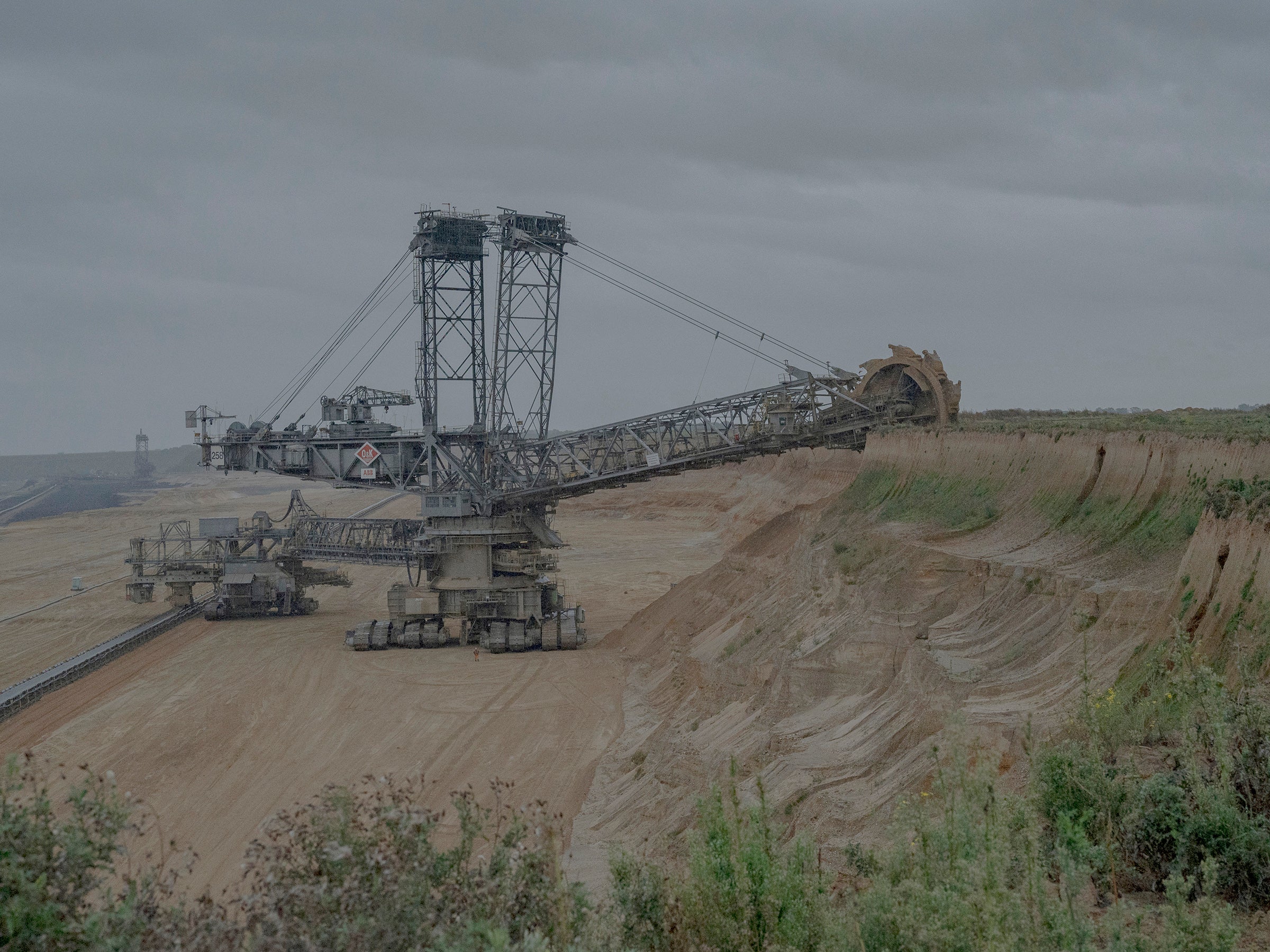
The yawning black-brown scar in the earth that is Germany’s Garzweiler coal mine has already swallowed more than a dozen villages. Centuries-old churches and family homes have been razed and the land they were built on torn away. Farmland has disappeared, graveyards have been emptied.
“All destroyed for coal,” says Eckhardt Heukamp, surveying the vast pit that drops away from the edge of his fields, 20 miles west of Cologne.
But there’s still more under his feet to be mined: Six more villages are threatened.
Farmer Heukamp, 56, is the last one holding out in Luetzerath, the next hamlet set to be wiped away to allow more digging for coal to power German homes. He is fighting the forced expropriation of the 18th-century farmhouse his family has lived in for generations, which now lies just a few hundred yards from the mine’s edge.
As world leaders prepare to come together in Glasgow for the UN Climate Change Conference, the tiny community is on the front line in a battle to bring Germany in accord with its climate commitments – one of many such communities around the world, as countries struggle to keep up with ambitious pledges to slash emissions.
Destroying settlements and burning the coal underneath would mean Germany would fall short of its commitments under the 2015 Paris climate agreement
The encroaching pit is a reminder of the contradictions of Germany’s environmental record. Outgoing Chancellor Angela Merkel has been at the forefront of international diplomacy on climate but Europe’s largest economy has struggled to kick its addiction to coal.
Germany has pledged to stop burning coal by 2038, at least eight years behind 16 European countries that have committed to ending coal use by the end of this decade or earlier. There is some hope it may change as the three parties that made gains in September’s elections – including the Greens – form a new government. So far they have said they would “ideally” like a 2030 exit from coal.
“We want to be a front-runner on climate. We sell ourselves as this,” says Pao-Yu Oei, a professor in the economics of sustainable energy transition at the University of Flensburg. “But for some very easy, simple things, we are not willing to take the sacrifice and basically take on our own lobby groups.”
Although it burns a fraction of the coal of China or the US, in the European Union, Germany is the second-largest consumer of hard coal and the biggest consumer of the less-energy-efficient lignite, or brown coal, which lies under Luetzerath.
The idea that any villages need to be sacrificed for the country’s energy needs are outdated by about a decade, said Oei.
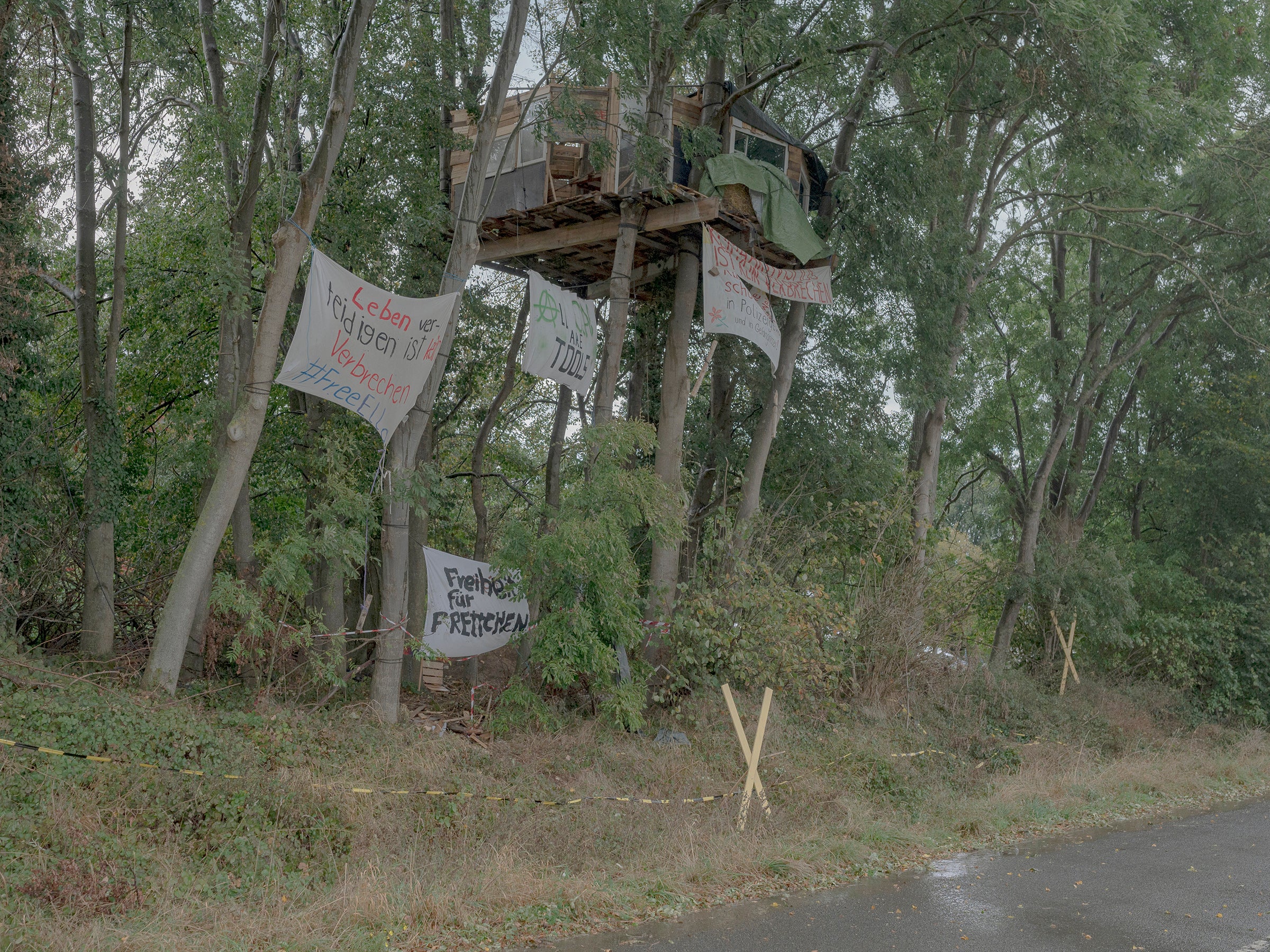
Destroying settlements and burning the coal underneath would mean Germany would fall short of its commitments under the 2015 Paris climate agreement, according to a report Oei co-authored that was published by the German Institute for Economic Research and commissioned by organisations fighting to save the villages. The Paris agreement aims to limit global warming to 1.5C (2.7F) compared with pre-industrial levels.
“Germany has the technical means and they have the economic means and the financial means to sustain their electricity and energy system without having to destroy more villages,” says Oei.
In western North-Rhine Westphalia, where Luetzerath lies, coal is ever-present.
Heaps adorn roundabouts, in a monument to the fuel. RWE, the multinational power company that owns the pit, has set up viewing and information points around the mine’s edge.
“Capitalist s***,” reads a sticker slapped on one board in reference to the work of the pit’s 13,000-ton, 110 yards tall excavators, like the one in Heukamp’s field. An excavator is capable of extracting 240,000 tons of coal a day.
With its last black coal mines closed, Germany is the biggest producer of brown coal in the world.
Generally closer to the surface than black coal, lignite is often mined in huge open-cast surface mines rather than underground. After the coal is gone, the soil is backfilled and replanted but the landscape is irrevocably altered.
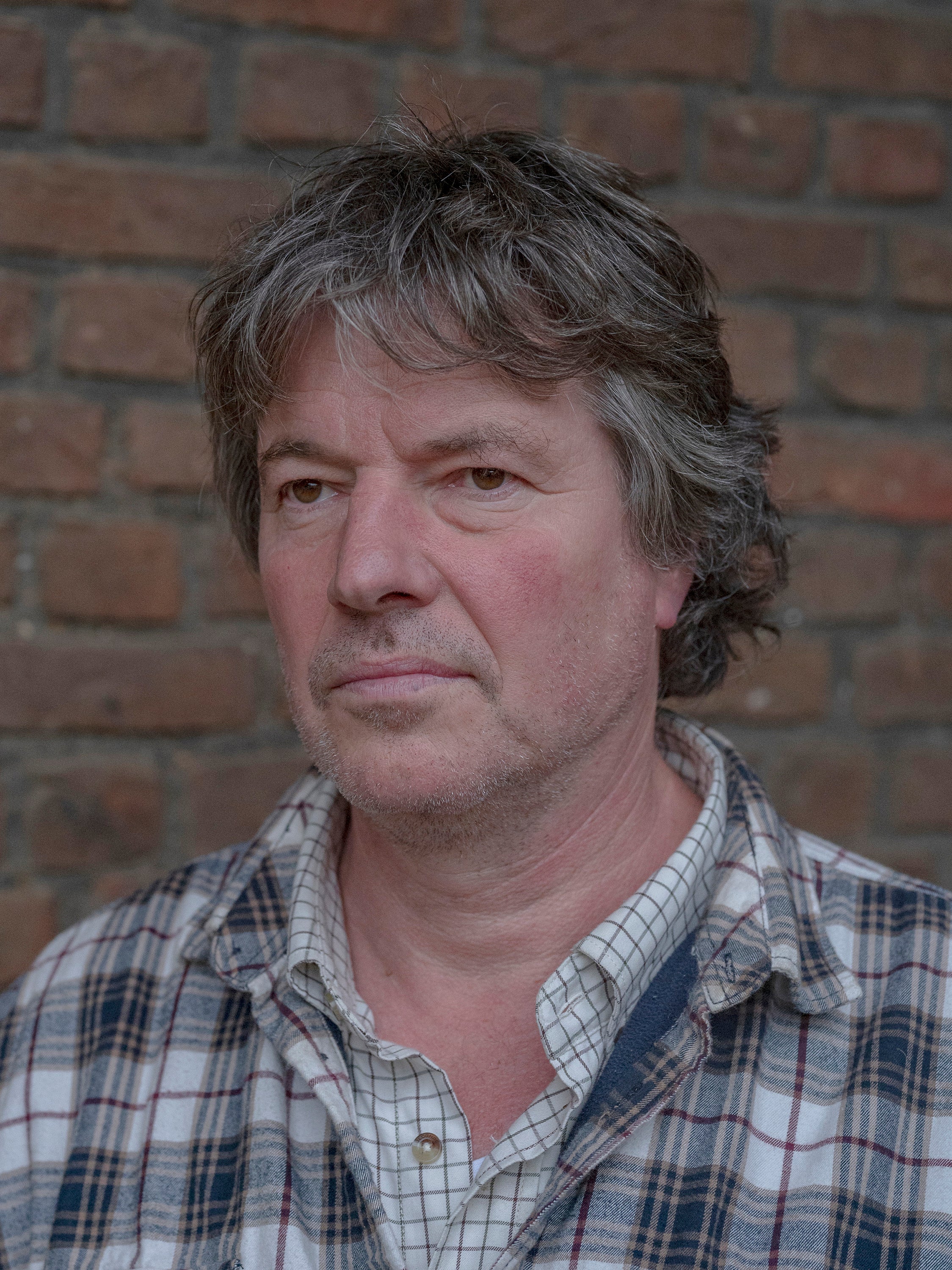
In all, the area RWE has the right to mine around Luetzerath stretches twice the size of Manhattan.
For decades, villages in the area have been pulled down for mining. About 35,000 people have been forced to give up their homes since the end of the Second World War.
Garzweiler 1, on the other side of a six-lane motorway, brought an end to more than half a dozen villages, including Garzweiler, after which the mine is named.
After coal there was exhausted, digging began on the other side of the autobahn at Garzweiler 2 in 2006, with plans to displace another dozen communities and thousands of residents. They have disappeared, one by one.
RWE says it is fully compliant with Germany’s current coal exit plan and that all three of its lignite mines will be closed earlier than planned. In return for doing so, RWE received a €2.6bn (£2.2bn) payout from the government.
Relocations are avoided where possible, says spokesman Guido Steffen, adding that nearby Inden mine can’t be expanded instead as there is no rail link to the company’s more modern power plants.
The coal of Luetzerath is needed in the near future, he says, and the coal under the neighbouring five villages in the next “few years” to supply RWE’s power plants.
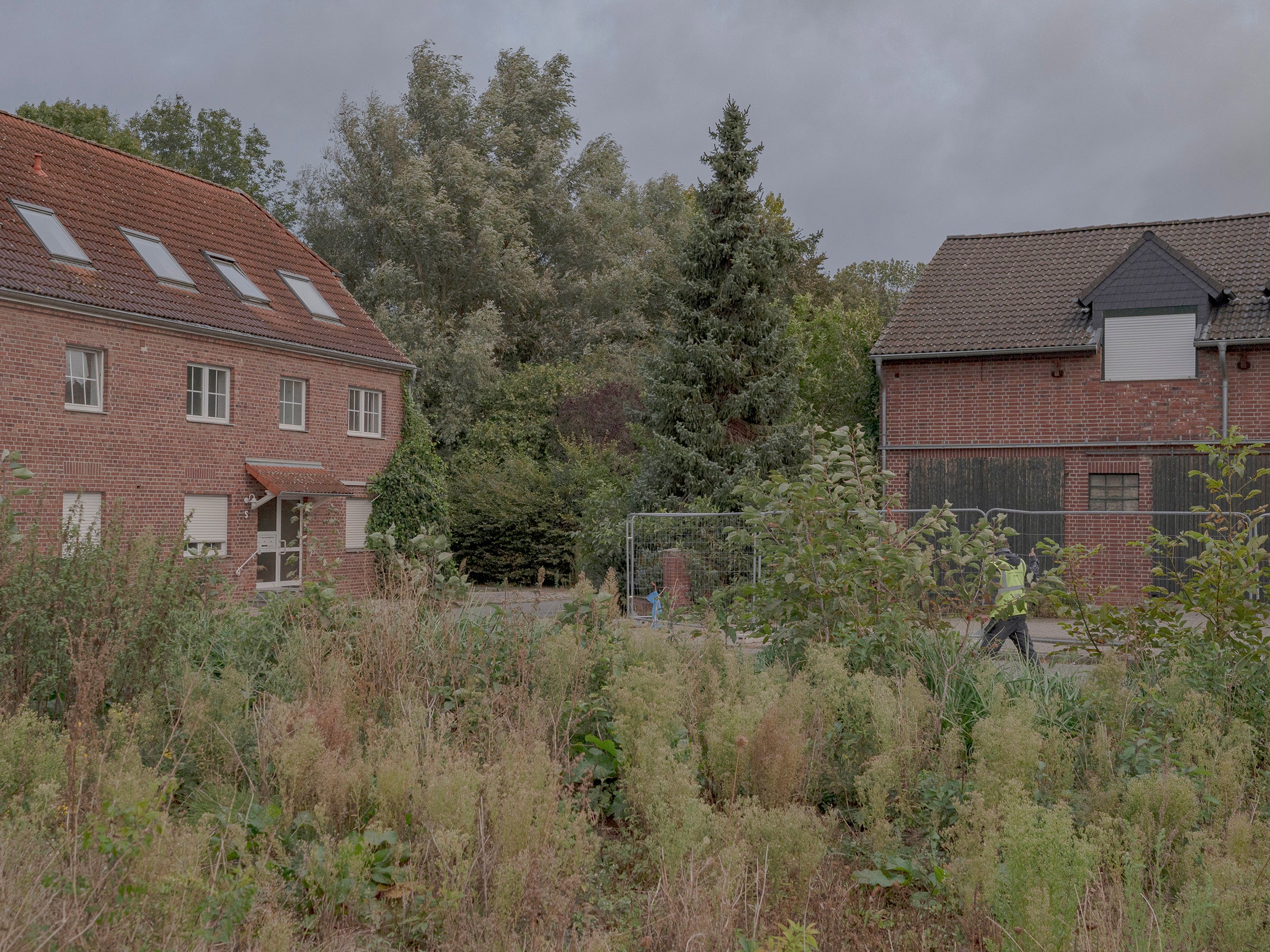
Luetzerath was once a close-knit community of around 90 people, Heukamp says. But his neighbours have slowly sold and left. In the courtyard of his farm, near his tractors and combine harvester, lies a pile of gravestones.
Family graves had to be exhumed and relocated in the last village to be flattened. There is no longer any sign of the church that was pulled down despite its being a protected building.
Heukamp has already been displaced by mining. In 2015, he moved from another village that was cleared to make way for the pit and returned to the family farm. He says RWE is not offering him enough compensation for his property to buy something equivalent.
“The financial plays a role, but of course it’s an emotional story to leave this farm,” he says. “Home is an important part of life for me.”
As villagers have slowly moved out, dozens of activists have moved in. “Defend Luetzerath, Defend 1.5C,” reads a sign that Heukamp held up alongside Swedish climate activist Greta Thunberg during a recent visit.
Treehouses dot a copse of trees between Heukamp’s farmhouse and the mine’s edge. A gully holds dozens of tents.
A woman who goes by the name Salome Dorfer, 25, lives in a treehouse about 26ft up a towering oak. She’s been here for the past year. Dorfer is the name she uses for her activism, as she said she fears that using her real name could hurt her employment prospects.
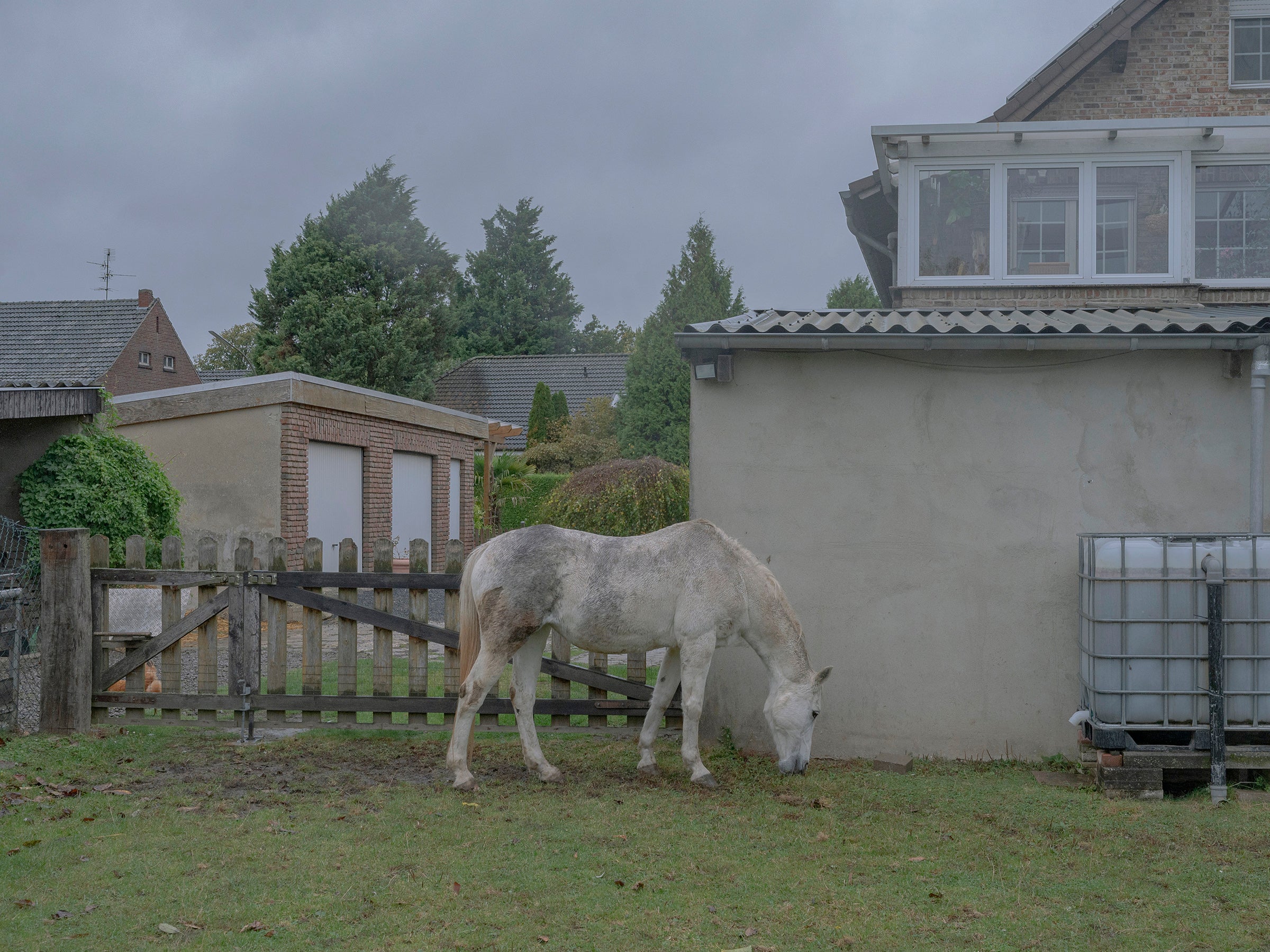
Luetzerath’s new residents say they won't leave without a fight to save the village.
“We are preparing tactics to basically block the roads when they come with their working equipment,” she says, touring the site barefoot on a rainy day. “We’ll make it as big as possible to show the world that we need to change this, that we can’t just act as usual in the midst of a climate crisis.”
The German government had not expected to meet its 2020 emissions reduction target but limped over the line thanks to the pandemic. But it is expected to slip back below its target this year as the country returns to business as usual.
Still, it has set ambitious new goals: a 65 per cent cut in emissions from pre-industrial levels by 2030 and 88 per cent a decade later. The government was forced to scramble to update its climate law this year after the country’s highest court ruled that it fell so short it essentially endangered the fundamental rights and freedoms of the country’s youth.
But even if the villages are saved, many feel these communities are broken beyond repair – already divided by the resettlement process
Experts say it needs to update its coal plans to reach those targets. The percentage of electricity Germany makes from coal has dropped significantly in recent years but it still accounts for more than a quarter of the country’s power supply.
Germany’s 2038 goal appears increasingly out of step with Europe’s larger economies. We say we are phasing out coal by 2024, France by 2022 and Italy by 2025.
Making it more difficult for Germany is its decision to phase out nuclear by 2022 in the wake of Japan’s 2011 Fukushima disaster, plus its large manufacturing industry. Experts say Germany needs to rapidly ramp up renewables to fill the gap but soaring gas prices could complicate efforts for that transition, with fears it could increase electricity bills even further.
Coal is cheap and plentiful and bringing the exit date further forward will mean more payouts to coal companies but Germany is under pressure to do so from multiple fronts.
Even if the coal exit date is changed, it’s not clear if it will come in time for Luetzerath. Several houses opposite Heukamp’s farm were pulled down in January.
“The time is tight,” says Heukamp. If his legal efforts fail, he could be evicted in days.
But there is more hope for residents of five other threatened villages a little further from the edge of the pit.

Down the road in the village of Kuckum, the Dresen family now think they might be able to stay in the home where their family has lived for generations. With their village earmarked for demolition since 1995, the looming threat of displacement has been ever-present in 21-year-old Tina Dresen’s life.
“As a kid you were always thinking, to the left, there’s this hole,” she says. “And there is only sadness. It’s like you’ve been living next to nothing, and the nothing reaches you.”
The family had initially thought selling was inevitable but then the remaining corner of Hambach Forest – the previous symbolic centre of environmentalists’ fight against Germany’s coal policy – was saved when the government brought forward its coal exit date.
“Then we thought it’s possible to win this fight,” says Tina’s brother David Dresen, 30, an activist with Alle Doerfer Bleiben, or All Villages Stay, a group fighting to save the villages.
The majority of their neighbours have already gone. “Empty, empty, empty,” he says, pointing to the red-brick houses that line the road.
Two-thirds have already sold, according to RWE letters posted to residents earlier this year, urging them to resettle, a process that has been going on for the past five years. The company says it aims to move the village residents together, in a process of “joint resettlement“ that has “stood the test for decades now in preserving a village community.”
Families are offered a plot in a new village that they can buy and build on from the money offered to them for their property by RWE. Most reach an amicable settlement, it says. Those that don’t can be forcibly evicted based on a German law that allows expropriations for the “greater good”.
About half of those who have left have moved out of the area completely.
The Dresens are not convinced by the idea of a life in New Kuckum. Three generations of their family live across the old farmhouse and a newer conversion in what was once the cow shed. There’s an orchard and paddocks for three horses at the back on a property stretching over three acres.
They say they can’t rebuild what they have now and that they are being offered the option to buy a half-acre plot in the new village, where there would be no space for the animals.
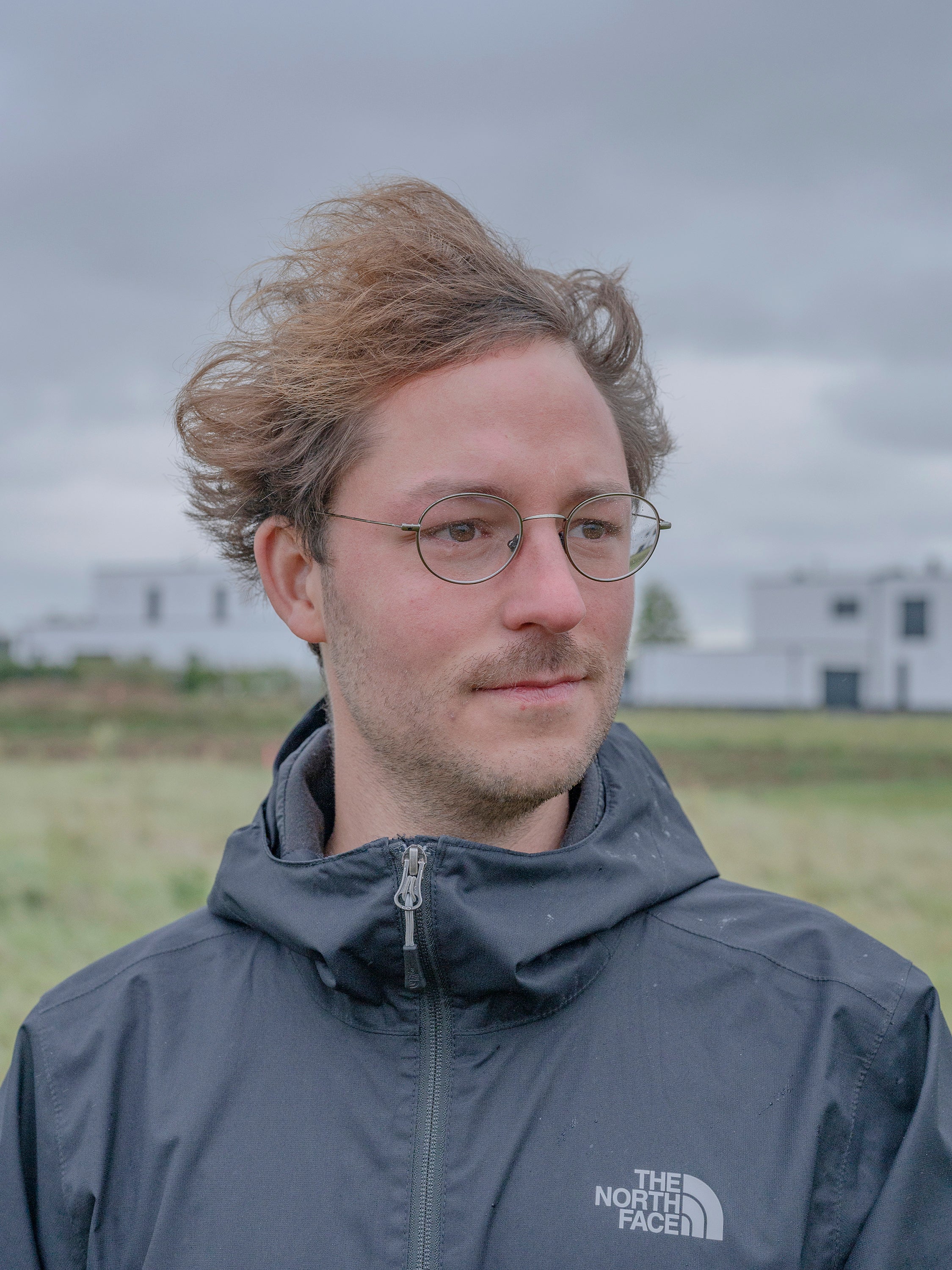
Clumped together with a group of other “new“ villages, between an autobahn and a railway line, the new development bears little resemblance to the old communities. Unfinished streets are lined with boxy new homes in what feels like a nondescript suburb.
“It has the same street names, that’s it,” says David Dresen.
But even if the villages are saved, many feel these communities are broken beyond repair – already divided by the resettlement process.
It seeped into the classrooms at school, where there was pressure by children on those from families that were holding out. And now that there’s a chance that the villages might remain, some families who left are regretting it.
“They are angry with the people who stayed, because we are a reminder that they could have,” says Tina Dresen.
Some of those who have sold are saying they should have the right to buy their houses back. Others accuse those who have held out of splitting the community and say that if they were forced to sell for it to be flattened, it should be. The tensions have boiled over on social media.
“There are extremes on both sides,” says Hans Josef Dederichs, a local councillor for the Greens, in a sterile, spartan new building in New Kuckum.
“This open-pit mine is the worst thing that can happen to you; the community is torn apart by it,” says Dederichs, who is also president of the local “rifle brotherhood”, a club that organises community events. There’s conflict, he says, but one thing that everyone is now agreed on – it’s looking increasingly like the upheaval here wasn’t even necessary.
“It was all in vain,” he says.
Katharina Koll contributed to this report.
© The Washington Post
Join our commenting forum
Join thought-provoking conversations, follow other Independent readers and see their replies
Comments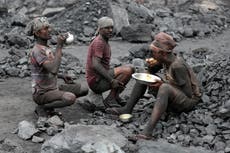

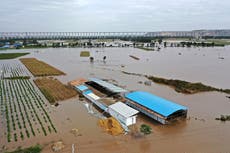
Bookmark popover
Removed from bookmarks